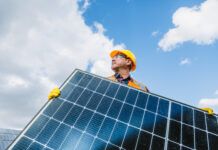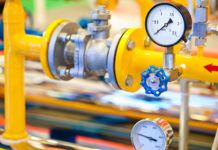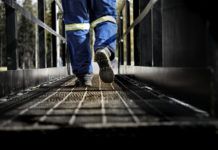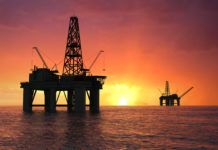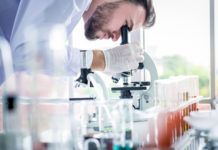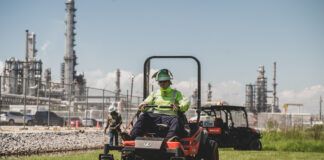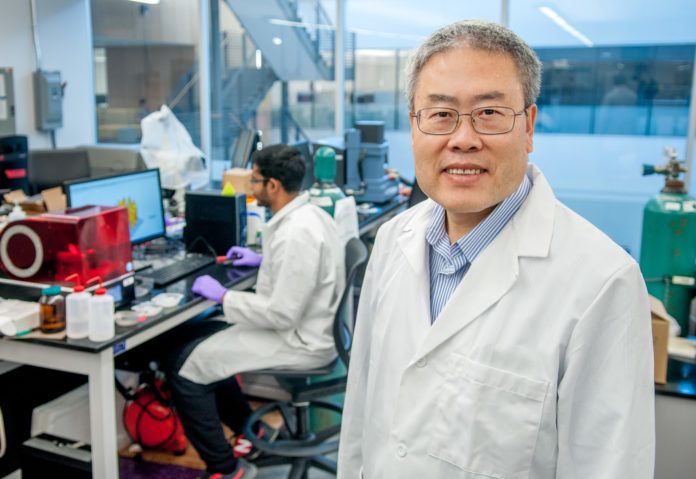
As owners go to extraordinary lengths to prevent environmental impacts in their offshore oil and gas operations, science is taking a laboratory-based approach to the matter. Technologies that would have been inconceivable a decade ago provide hope that oil seepages, blowouts and spills can be prevented or better controlled, thereby protecting the fragile Gulf ecosystem.
Local academics are also getting in on the act. Researchers in the LSU Department of Mechanical and Industrial Engineering have submitted a patent application for a “shape memory polymer” that could one day seal a well fracture or keep it open, depending upon the application and need. While not yet field-tested, the memory polymer could be molded into a pre-designed, memorized shape that is triggered by heat.
LSU Professor Guogiang Li, who developed the material in collaboration with Penn State petroleum engineering professor Arash Dahi Taleghani, says there are numerous potential applications for the product in the oil and gas market. “You can twist it into a helical spring or other shape,” Li says. “The shape would then be re-made once it’s in place. When that happens, the polymer can act as a means of sealing a crack or fissure, or it can keep it open—if a continued flow of oil or natural gas is desired.”
During an application, the memory polymer is compressed and the volume of polymer particles is reduced. Once in the desired location, naturally-occurring temperatures trigger a reaction in the polymer that causes it to assume its pre-determined shape. “It will recover to the original shape and could seal a crack or fissure,” Li says.
During the early stages of development, Li and student workers performed testing, modeling and validation of the idea, ultimately creating the polymer material in the laboratory. “Once we approved the properties in our lab, I delivered the material to Dr. Taleghani and they modified it for a petroleum application,” he says.
Li has received several inquiries regarding the material from oil service companies, some of which are currently testing applications. “They are trying to take the technology from the lab to the field.”
ARTIFICIAL INTELLIGENCE
Should there be an accidental offshore release, University of Miami researcher Matthew Grossi says the artificial intelligence employed by some well-known tech giants could be used to predict the dispersion of oil, thereby providing a vital tool for containment and remediation.
Grossi spoke about the budding technology during the Gulf of Mexico Oil Spill & Ecosystem Science Conference in New Orleans. Since 2013, GoMOSES has served as a clearing house of sorts for scientists, academics and government officials to discuss oil containment and remediation technologies, among a host of other ecological topics related to the Gulf.
Grossi says existing modeling software falls short of accurately predicting where oil will go following a release. “Observations are obviously important,” he adds. “In April, we used ships and drones to monitor environmental conditions in the Gulf and deployed hundreds of drift cards [often used to gather information about the drift of an oil spill] into the water and monitored them with drones.” But when applying the observations to conventional forecasting models, his team ran into some challenges. It turns out the models can only assimilate a certain amount of data.
Grossi’s team then turned its attention to the AI technologies employed by Facebook, Google and Amazon. “One thing that all these companies have in common is that they all use artificial intelligence in near real time to analyze an enormous wealth of user statistics to guess what ad might be appealing to you, or who you might know, or what product you might want to buy.
“So this got us wondering, can we do this in the ocean sciences as well?”
The field of artificial intelligence, or machine learning, incorporates the development of algorithms that learn and develop as they are fed examples from various data sets. “It’s a biologically inspired approach,” Grossi says. “It learns just as we do. We observe the world empirically and the neurons in our brains are stimulated when we learn patterns and learn how to analyze data. That’s what neural networks do. You feed them input and by means of weighted links, different neurons inside the neural net perform calculations and through different iterations adjust those weights.
“Essentially, you feed it one example at a time and the model learns statistical relationships between the data sets that you are giving it and what you expect to get out of it.”
Ultimately, Grossi’s team hopes to create a neural network that predicts surface velocity and other environmental parameters that might influence the dispersion of oil. “We’re going to let the model figure that out,” he says. “We’re moving away from a traditional approach where we tell the ocean how to behave and toward one where we allow the observations to tell the model what’s actually happening.”
MAPPING THE DATA
Grossi has teamed up with a professor in the University of Miami’s Electrical and Computer Engineering Department to create the computer model. “If this approach works, it’s going to offer a lot of new potential and open a lot of new doors in the way we can process observational data that is coming in daily from observing initiatives around the country and around the world.
“A lot of this data is still sitting on data servers, just waiting to be analyzed. Perhaps this is a new approach that we can utilize to that end.”
Some technologies are already gaining traction in the “real world” of oil tracking and remediation. In speaking to a gathering at the GoMOSES conference, Oscar Garcia, director of Water Mapping LLC in Corpus Christi, said the drones, thermal imaging software and mapping software his company uses are playing an increasingly significant role in tracking and predicting the dispersion of oil after a leak or spill.
He uses drift cards and drones in tandem to estimate the life cycle of an oil slick.
“Unmanned aerial systems [drones] have become a crucial tool for tactical positioning in oil spill field studies,” Garcia said. “As a result, in-situ measurements and UAS high-resolution mapping can be used to extrapolate valuable, predictive oil data.”

